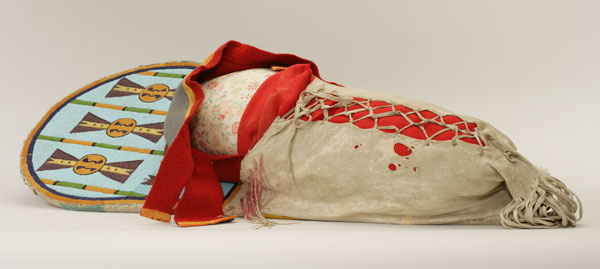 |
|
 |
|
|
This board is decorated with geometric elements. Cradleboards often had a small pouch that held the umbilical cord. The only time the umbilical cord could be removed from the pouch, was if the child faced a life-threatening illness. The Medicine man or woman would use it in their healing. When the baby is in the cradleboard, it looks out to the world and they learn by watching; developing the skill of observation, a necessity for survival. Living primarily outdoors, traveling by foot, canoe or horse, the babies and toddlers were securely attached to their mother’s back, the horse, or even in a bush while the mother works. This “womb” was only carried by the women—grandmothers, mothers, aunts, older sisters. |
|